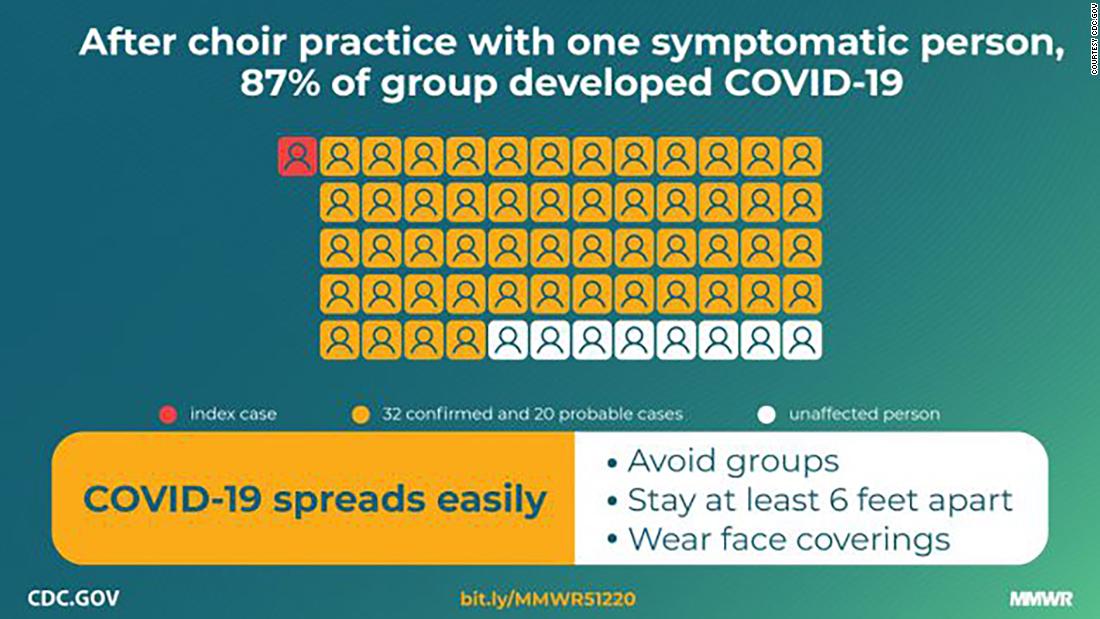[ad_1]
After interviewing everyone involved in the March 10 choir practice, and determining precisely how the chairs been arranged and where each choir member had been sitting, standing and later mingling, the investigators determined that one person with mild respiratory symptoms (and who later tested positive for Covid-19) had likely triggered the outbreak.
They found that, at the start of the practice, all 61 members sang together in a room for 40 minutes. Then they split into two groups in two rooms for an additional 50 minutes. Next came a 15-minute break, where the whole group chatted and snacked on cookies and oranges.
Finally, the large group returned to their seats in the main room and practiced for another 45 minutes before re-stacking their chairs and leaving.
The choir members were almost all women (84%) with an average age of 69 years. Of those with symptoms, 32 tested positive for Covid-19. Another 20 were not tested but were considered probable cases based on symptoms and association with the lab-proven cases. Three of the 52 were hospitalized, including two who died from the infection about two weeks after developing symptoms. As with other reports, the three hospitalized patients had at least two pre-existing health conditions.
According to the report, the choir members risked infection when moving and stacking the chairs, sharing snacks and touching common areas.
But the most likely way the virus spread was through singing and chatting while sitting close together.
The outbreak also provides strong if indirect support for continued adherence to current CDC guidelines that emphasize physical distancing as well as active screening with self-isolation of those with even mild symptoms. Until we have capacity for accurate testing with rapid results, we will be left with this sturdy, grandmotherly advice that saw countless generations in the pre-vaccine era through countless other epidemics.
The report of this outbreak also includes an important limitation. The authors decided not to map out where each of the 32 confirmed, 20 probable and 8 uninfected persons sat, though they had constructed a complete seating chart. This weakened the article a small amount, but the decision was made to protect patient privacy, an extremely important but sometimes overlooked aspect of any outbreak investigation.
Indeed, the relentless pursuit and exposure of a culpable so-called “patient zero” is not only of little value in an epidemiological context. It’s also vindictive and potentially life-altering for anyone correctly — or, worse, incorrectly — identified as the putative “source” of the misery for so many in the community. As with other aspects of this complex epidemic, the maintenance of our humanity first and foremost must remain the everyone’s highest priority.
[ad_2]
Source link



